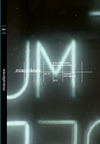CLIL Instruction and its Effects on the Development of Negotiation Strategies
DOI:
https://doi.org/10.26754/ojs_misc/mj.20139229Keywords:
CLIL, negotiation strategies, interaction, mainstream English learners, role-playAbstract
The current study proposes to analyze the positive effects that Content-and¬Language-Integrated-Learning (CLIL) instruction can have on the development of negotiation strategies, which are an essential part of interaction. Thus, in order to see whether CLIL instruction furthers any linguistic development in this respect, we are going to examine which negotiation moves (e.g. clarification requests, confirmation and comprehension checks, among others) are employed both by CLIL and mainstream (or non-CLIL students) while performing an extemporaneous role-play in pairs. The results indicate that CLIL students make use of a higher number of instances and of a wider range of negotiation moves (e.g. self-repairs, reformulations, and clarification requests) while interacting than their non- CLIL counterparts.
Downloads
References
Ackerl, C. 2007. “Lexico-Grammar in the Essays of CLIL and non-CLIL Students: Error Analysis of Written Production”. In Smit, U. and C. Dalton-Puffer (ed.) Vienna English Working Papers (Views) (Special Issue: Current Research on CLIL 2) 3 (16): 6-12.
Baker, C. 2006. Foundations of Bilingual Education and Bilingualism (4th ed.). Clevedon: Multilingual Matters.
Buckwalter, P. 2001. “Repair Sequences in Spanish L2 Dyadic Discourse: A Descriptive Study”. The Modern Language Journal 85: 380-397.
Dalton-Puffer, C. 2007. Discourse in Content and Language Integrated Learning (CLIL) Classrooms. Amsterdam/Philadelphia: John Benjamins Publishing Company.
—. 2008. “Outcomes and Processes in Content and Language Integrated Learning (CLIL): Current Research from Europe”. In Dalanoy, W. and L. Volkmann (ed.) Future Perspectives for English Language Teaching. Heidelberg: Carl Winter: 139-157.
—. T. Nikula, and U. Smit. 2010. “Language Use and Language Learning in CLIL: Current Findings and Contentious Issues”. In Dalton-Puffer, C., T. Nikula and U. Smit (ed.) Language Use and Language Learning in CLIL Classrooms. Amsterdam/Philadelphia: John Benjamins Publishing Company: 279-293.
Foster, P. and A. S. Ohta. 2005. “Negotiation for Meaning and Peer Assistance in Second Language Classrooms”. Applied Linguistics 26 (3): 402-430.
Fuentes, M. A. and E. Hernández. 2011. “From ‘This is Impossible’ to ‘I will Make the Standard Higher’: A Close Look at Interaction in the CLIL Classroom”. Bellaterra Journal of Teaching & Learning Language & Literature 4 (2):17-36.
Gassner, D. and D. Maillat. 2006. “Spoken Competence in CLIL: a Pragmatic Take on Recent Swiss Data”. In Dalton-Puffer, C. and T. Nikula (ed.) Vienna English Working Papers (Views) (Special Issue: Current Research on CLIL) 3 (15): 41-47.
Graddol, D. 2001. “The Future of English as a European Language”. The European English Messenger, X/2: 47-55.
Guazzieri, A. 2008. “Oral Interaction in CLIL Student-Led Cooperative Group Work”. In Coonan, C. M. (ed.) CLIL e l’apprendimento delle lingue. Le sfide del nuovo ambiente di apprendimento. Venezia: Libreria Editrice Cafoscarina: 79-104.
Hüttner, J. and A. Rieder-Bünemann. 2010. “A Cross-Sectional Analysis of Oral Narratives by Children with CLIL and non-CLIL Instruction”. In Dalton-Puffer, C., T. Nikula and U. Smit (ed.) Language Use and Language Learning in CLIL Classrooms. Amsterdam/Philadelphia: John Benjamins Publishing Company: 61-81.
Juan-Garau, M. 2008. “Contexto y contacto en el aprendizaje de lenguas extranjeras”. Revista Electrònica d’Investigació i Innovació Educativa i Socioeducativa 0 (1): 47-66.
—. J. Salazar-Noguera, and M. Gené-Gil. In press. “Some Insights into Longitudinal EFL Written Development under CLIL Provision: Holistic Assessment of Language Gains and Attrition”. In Pérez-Hernández, C., et al. (ed.) Proceedings of the 36th AEDEAN Conference. Málaga: Servicio de Publicaciones de la Universidad de Málaga.
Lasagabaster, D. and J. M. Sierra. 2009. “Language Attitudes in CLIL and Traditional EFL Classes”. International CLIL Research Journal 1 (2): 4-17.
—. 2011. “English Achievement and Student Motivation in CLIL and EFL Settings”. Innovation in Language Learning and Teaching 5 (1): 3-18.
Lyster, R. 2007. Learning and Teaching Languages Through Content: a Counter-balanced Approach. Amsterdam/Philadelphia: John Benjamins Publishing Company.
Llinares, A., T. Morton, and R. Whittaker. 2012. The Roles of Language in CLIL. Cambridge: CUP.
Maillat, D. 2010. “The Pragmatics of L2 in CLIL”. In Dalton-Puffer, C., T. Nikula and U. Smit (ed.) Language Use and Language Learning in CLIL Classrooms. Amsterdam/Philadelphia: John Benjamins Publishing Company: 39-61
Mariotti, C. 2006. “Negotiated Interactions and Repair Patterns in CLIL Settings”. In Dalton-Puffer, C., and T. Nikula (ed.) Vienna English Working Papers (Views) (Special Issue: Current Research on CLIL) 3 (15): 33-41.
—. 2007. Interaction Strategies in English-Medium Instruction. Milan: Franco Angeli.Nikula, T. 2007. “Speaking English in Finnish Content-Based Classrooms”. World Englishes2 (26): 206-223.
—. 2010. “Effects of CLIL on a Teacher’s Classroom Language Use”. In Dalton-Puffer, C., T. Nikula and U. Smit (ed.) Language Use and Language Learning in CLIL Classrooms. Amsterdam/Philadelphia: John Benjamins Publishing Company: 105-125.
Rallo-Fabra, L. and M. Juan-Garau. 2011. “Assessing FL Pronunciation in a Semi-Immersion Setting: The Effects of CLIL Instruction on Spanish-Catalan Learners’ Perceive Comprehensibility and Accentedness”. Poznan Studies in Contemporary Linguistics 1 (47): 96-108.
Ruiz de Zarobe, Y. 2010. “Written Production and CLIL: An Empirical Study”. In Dalton-Puffer, C., T. Nikula and U. Smit (ed.) Language Use and Language Learning in CLIL Classrooms. Amsterdam/Philadelphia: John Benjamins Publishing Company: 191-209.
Stohler, U. 2006. “The Acquisition of Knowledge in Bilingual Learning: an Empirical Study on the Role of Language in Content Learning”. In Dalton-Puffer, C., and T. Nikula (ed.) Vienna English Working Papers (Views) (Special Issue: Current Research on CLIL) 3 (15): 41-47.
Downloads
Published
How to Cite
Issue
Section
License
Copyright (c) 2014 Maria Juan-Garau

This work is licensed under a Creative Commons Attribution-NonCommercial 4.0 International License.


